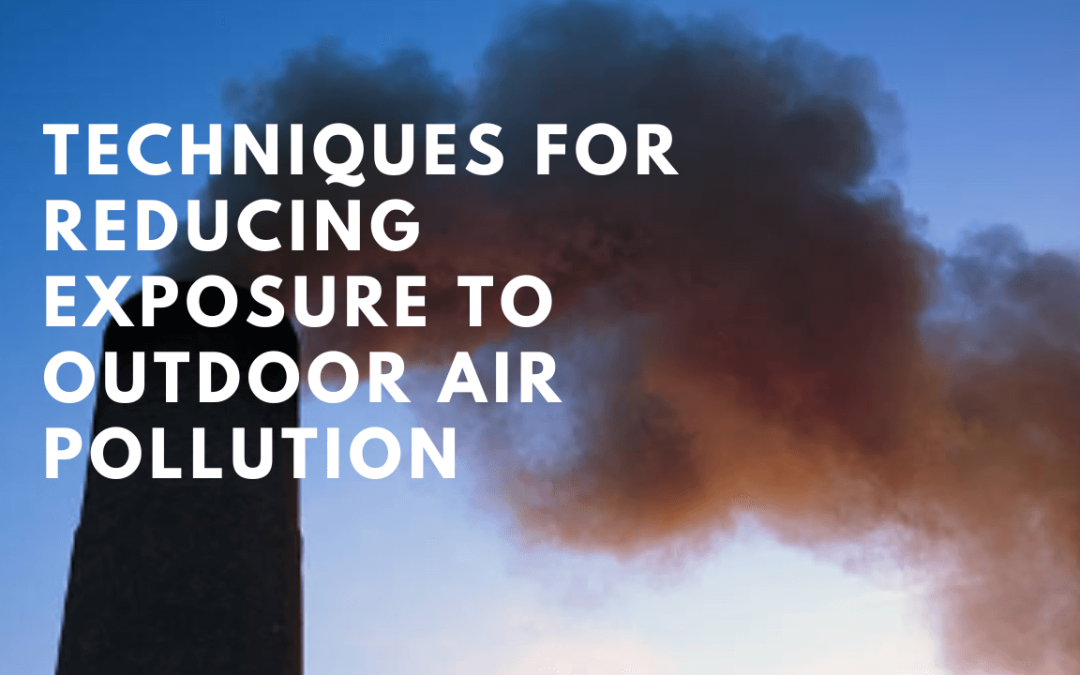Outdoor air pollution, a complex mixture of harmful substances dispersed in the Earth’s atmosphere, stands as a critical environmental concern with far-reaching impacts on human health, ecosystems, and the global climate. This pollution originates from a variety of sources, both man-made and natural.
Major anthropogenic contributors include the burning of fossil fuels by vehicles and industrial processes, construction activities, agricultural practices, and the use of certain chemicals and waste. Natural sources, on the other hand, encompass wildfires, volcanic eruptions, dust storms, and pollen dispersal. These pollutants can vary from particulate matter (PM2.5 and PM10), which are tiny particles or droplets in the air that can penetrate deep into the lungs and even enter the bloodstream, to gases such as nitrogen dioxide, sulfur dioxide, carbon monoxide, and ozone.
The health impacts of outdoor air pollution are profound and wide-ranging, leading to respiratory diseases, cardiovascular conditions, stroke, and premature death, particularly among vulnerable populations like children, the elderly, and those with pre-existing health conditions. Beyond health, outdoor air pollution also causes significant environmental damage, contributing to the acidification of oceans and soils, damaging crops, forests, and wildlife, and playing a pivotal role in climate change through the emission of greenhouse gases.
Understanding outdoor air pollution

The Air Quality Index (AQI) serves as a vital tool designed to provide the public with an understandable measure of how clean or polluted the air is on any given day, along with an indication of the potential health impacts. The AQI scale ranges from 0 to 500, divided into categories that reflect the level of health concern. An AQI value from 0 to 50 represents good air quality with minimal potential impact on health, making it safe for the general population to engage in outdoor activities.
Values between 51 and 100 are considered moderate, indicating acceptable air quality, though there might be a minor concern for a very small number of people who are extremely sensitive to air pollution. When AQI values fall within the 101 to 150 range, the air quality is categorized as unhealthy for sensitive groups, such as individuals with respiratory or heart conditions, children, and older adults, who may experience health effects, while the general public is unlikely to be affected.
An AQI of 151 to 200 signifies unhealthy air quality for everyone, and members of sensitive groups may experience more serious health effects. A value between 201 and 300 indicates very unhealthy air conditions, triggering health warnings of emergency conditions, with the entire population likely to be affected.
Lastly, AQI values above 300 are deemed hazardous, representing a health warning of emergency conditions as the entire population is more likely to be affected by serious health effects. Individuals must understand how to interpret these AQI values to take appropriate precautionary measures, such as limiting outdoor activities, especially on days when the air quality is poor, to protect their health and well-being.
Techniques for reducing exposure to outdoor air pollution

Reducing exposure to outdoor air pollution is essential for protecting health, given its widespread and harmful effects. Adopting a comprehensive approach that combines personal actions with community initiatives can greatly lessen exposure risks:
- Stay Informed About Local Air Quality: Utilize air quality monitoring apps and websites to access real-time data on pollutant levels. This information allows individuals to schedule outdoor activities when air quality is more favorable.
- Limit Outdoor Activities During High Pollution: Especially important for vulnerable populations such as children, the elderly, and those with pre-existing health conditions, minimizing time spent outdoors during episodes of high pollution can protect health.
- Wear Protective Masks: In situations where outdoor exposure is unavoidable, wearing protective masks like N95 or P100 respirators can significantly reduce the inhalation of harmful particles.
- Improve Indoor Air Quality: Enhancing the air quality inside homes and buildings through proper ventilation, the use of air purifiers with HEPA filters, and maintaining indoor plants that can absorb pollutants helps to reduce overall exposure.
- Support Clean Energy Initiatives: Advocating for and participating in clean energy initiatives and policies aimed at reducing emissions from vehicles and industrial activities contribute to long-term air quality improvements.
- Plan Outdoor Activities Wisely: Choose locations known for cleaner air, such as parks away from busy roads, and opt for times when pollution levels are typically lower, like early morning or late evening, for outdoor activities.
- Use Public Transportation and Carpooling: Reducing personal vehicle use by opting for public transportation, carpooling, and other shared mobility solutions not only decreases individual exposure but also contributes to reducing overall emissions.
Why you need to improve Techniques For Reducing Exposure To Outdoor Air Pollution
Improving techniques for reducing exposure to outdoor air pollution is essential for addressing the growing concerns associated with poor air quality in many urban and industrial areas worldwide. The urgency to enhance these methods arises from their critical role in safeguarding public health and the environment:
- Health Impacts: There’s a strong link between exposure to air pollution and a wide range of health problems, including respiratory infections, heart disease, stroke, lung cancer, and the worsening of asthma and chronic obstructive pulmonary disease (COPD). Vulnerable populations such as children, the elderly, and individuals with pre-existing health conditions are at greater risk, highlighting the need for effective protective strategies.
- Economic Burden: The healthcare costs associated with treating diseases related to air pollution are staggering, placing a significant strain on public health systems and economies. Improving exposure reduction techniques can help alleviate these financial pressures.
- Environmental Damage: Air pollution doesn’t just affect human health; it also has detrimental effects on the environment. It contributes to climate change, harms wildlife, and damages ecosystems. Enhancing methods to reduce exposure can help mitigate these environmental impacts.
- Urgency Due to Climate Change and Urbanization: The increasing frequency of extreme pollution events, driven by climate change and rapid urbanization, underscores the immediate need for enhanced protective measures. By improving air quality monitoring systems, promoting cleaner transportation, enforcing stricter emissions regulations, and encouraging community engagement in pollution reduction, we can better protect public health and the environment.
- Sustainability and Future Generations: Advancements in reducing exposure to air pollution not only aim to protect current populations but also ensure a healthier planet for future generations. These efforts contribute to the broader goal of environmental sustainability.
Conclusion
We must understand the significance of reducing exposure to outdoor air pollution. The quality of the air we breathe directly affects our health, as well as the health of the trees and plants we care for.
In our previous discussions, we highlighted the primary sources of outdoor air pollution, such as transportation, industrial processes, and natural events like wildfires. We also explored the wide-ranging health impacts that air pollution can have on individuals, including respiratory illnesses, cardiovascular problems, and neurological disorders.
Now, let’s recap the techniques we have discussed for reducing exposure to outdoor air pollution. Firstly, we emphasized the importance of considering alternative transportation options, such as walking, cycling, or taking public transit. By choosing these modes of transportation, we can minimize our contribution to air pollution and protect ourselves and the environment.
Secondly, we delved into the significance of making informed decisions about outdoor activities by utilizing online tools and apps that provide real-time air quality data and forecasts. These resources, like the EPA’s AirNow website or mobile apps like AirVisual, enable us to plan our activities following air quality conditions, ensuring that we minimize exposure during periods of heightened pollution.
Additionally, we discussed the importance of incorporating small changes into our daily routines to reduce exposure. This can include avoiding areas with heavy traffic or idling vehicles, as well as taking different routes to work or outdoor destinations. These minor adjustments can have a cumulative effect in reducing our exposure to outdoor air pollution.
By taking advantage of local resources, such as air quality monitoring programs and clean energy initiatives, we can actively participate in efforts to reduce outdoor air pollution. Volunteering for environmental organizations and attending local government meetings provide avenues for us to contribute and advocate for cleaner air.
FAQ About Techniques For Reducing Exposure To Outdoor Air Pollution
You can check the air quality in your area using various air quality monitoring apps, websites, or local environmental protection agencies that provide real-time AQI (Air Quality Index) values and forecasts.
Yes, air purifiers, especially those equipped with HEPA filters, can effectively remove a significant portion of outdoor pollutants that enter indoor spaces, thereby reducing your overall exposure to harmful particles.
Communities can advocate for stricter pollution controls, support renewable energy projects, organize tree-planting initiatives, and promote public transportation and other eco-friendly travel options to collectively reduce air pollution levels.

